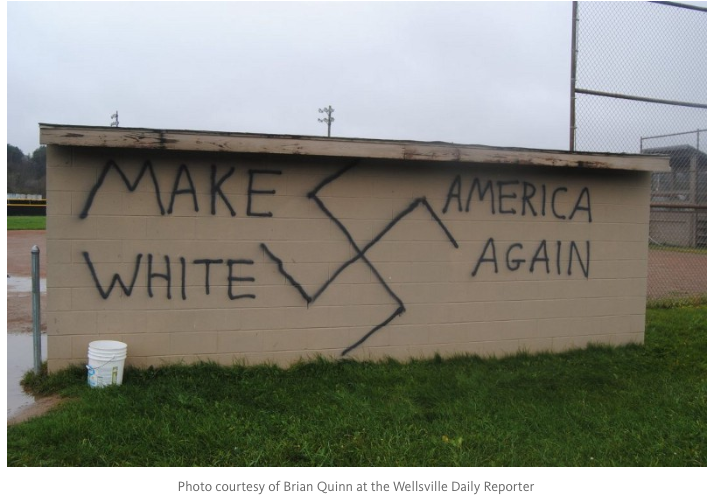
In the days following the presidential election on November 8, incidents of slurs, threats, and harassment—racist, anti-immigrant, antisemitic, homophobic, and sexist in nature—have spiked across the United States. The Southern Poverty Law Center, which tracks hate crimes, received more than 700 such reports as of November 18. Nearly 40 percent of these episodes have occurred in schools and colleges. The words “Make America Great Again” and hashtags such as #gobacktoafrica and #whitesonly were scrawled in a Minnesota high school bathroom. At a high school volleyball tournament in Texas, student fans chanted “Build the wall!” at the mostly Hispanic members of the opposing team. Swastika graffiti paired with the words “Go Trump” defaced a Brooklyn playground.
These incidents raise troubling questions for all of us, including educators and students. We should reflect on why we’re seeing this surge of intimidation and hatred and consider how the divisive rhetoric of the presidential race may have emboldened the perpetrators of these crimes. Analyzing the roots of these actions in politics, in American history, and in human behavior is important. But as teachers, students, and community members, we also need to be able to act—to denounce hate, to offer support to those who have been targeted, and to assert the norms and values of our communities.
All of Facing History and Ourselves’ case studies conclude with a chapter called, "Choosing to Participate," a collection of stories to help us consider the values, tools, and actions that can protect human rights, establish a sense of safety and dignity, and strengthen communities. These readings can be an entry point for important conversations in classrooms, among friends, and around the dinner table. Stories like these help us reflect on who we are, who we want to be, and the kind of world we want to create. They can help us to explore questions including:
-
What must individuals do and value in order to bring about a more humane, just, and compassionate world and a more democratic society?
-
How do we determine the most effective way to make a difference in our neighborhoods, our nations, and the world? Which strategies are best for bringing about the changes we want to see?
-
What does democracy need in order to survive? What tools do others use to sustain, maintain, and strengthen democracy?
Here are five readings from “Choosing to Participate” with particular resonance right now:
-
“Not in Our Town”: Residents of Billings, Montana banded together to stand up to racist and antisemitic violence in their town: “Intolerance, hatred, and violence test the strength of a community. How the members of a community respond is one measure of its citizens' commitment to democracy.” This reading includes a companion video and lesson plan.
-
"Talking About Religion": Eboo Patel, founder of Interfaith Youth Core, talks about his failure to respond to antisemitism in high school and how this experience of being a bystander informed his commitment to pluralism.
-
"Bullying at School": Students’ responses to bullying at their school reveal young people’s capacity to make change in their communities: "In a world full of injustice, suffering, and other social problems, the choice to participate can actually originate very close to home."
-
"Give Bigotry No Sanction": Correspondence between members of the Hebrew Congregation in Newport, RI and President George Washington in 1790 can inspire thoughtful conversation about the role of religious freedom in American democracy.
- "Walking with the Wind": Congressman and activist John Lewis tells a story from his childhood to explore how we can work together to create a better world: “...America itself felt as if it might burst at the seams—so much tension, so many storms. But the people of conscience never left the house. They never ran away. They stayed, they came together, and they did the best they could, clasping hands and moving toward the corner of the house that was the weakest.”
We recommend using these readings as entry points to think about our choices, attitudes, and actions in our world today. How else might you use these readings? Are there others you would add to the list? What are some ways your school, community, or family is responding to recent episodes of hate and intolerance?

